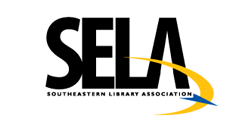Abstract
The educational value of children’s literature is supported by a numerous body of research. Helping children to read, write, develop fluency, critical thinking skills and multicultural awareness are just a few of the essential benefits children’s books provide. During the twentieth and twenty-first centuries, children’s book publishing has risen from a small publishing venture to big business. About 2,000 books were published for children in 1960. By the nineties, this number increased to 5,000 and has continued to rise. The “voluminous body of high-quality literature” published yearly makes selection by librarians difficult. As Bernice Cullinan and Lee Galda note, “Our job as teachers, librarians, and parents is to select the best from the vast array of books.” Another vital aspect of our roles as librarians is creative promotion of new children’s books. While the literature reveals a broad array of ideas and programs for celebrating children’s books in public and school libraries, little has been geared towards academic librarians.
Publication Date
Fall 2007
Included in
Education Commons, Library and Information Science Commons, Reading and Language Commons
